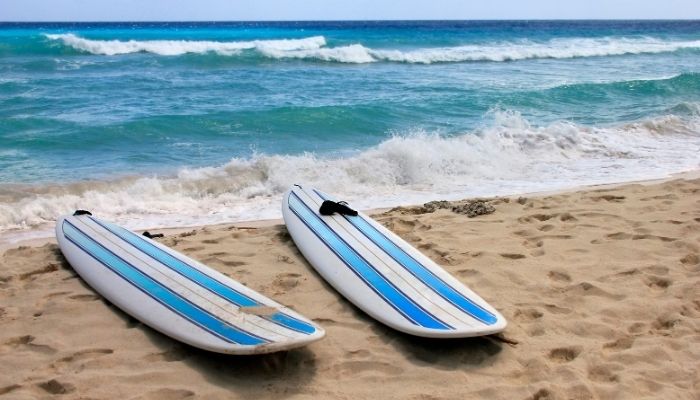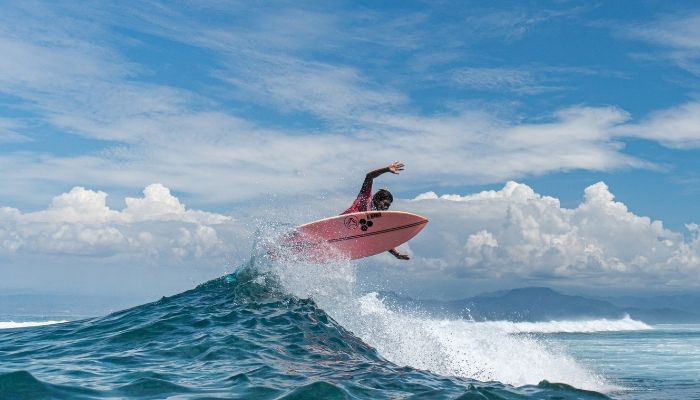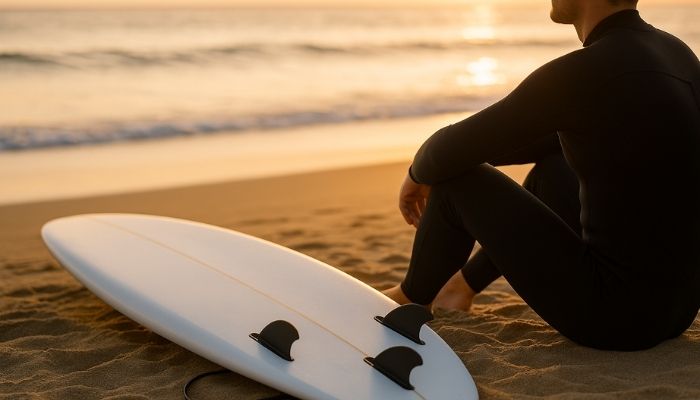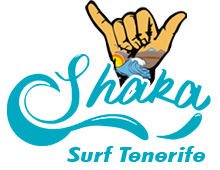
Discover the Parts of a Surfboard (and How They Influence Your Surfing)
When you step onto a board, it’s not all down to your technique. The shape and design of each part determine how it behaves (and how you experience it) in the water.
That’s why knowing the parts of a surfboard isn’t just about memorising a list. The nose, the tail, the rails or the fins are responsible for giving you more stability, generating speed, or allowing you to turn with greater precision.
If you understand what each element does, it becomes clearer why some boards make learning easier while others challenge you to improve. And that’s where the real connection begins—between you, the board and the wave… shall we begin?
Why Is It Important to Know the Parts of a Surfboard?
When you get on a surfboard, you’re not standing on just any object: every small part of it plays a role in how you move across the water.
Knowing the function of each part helps you better understand how the board behaves on the wave and, more importantly, why some boards feel more stable, faster, or more manoeuvrable than others.
Once you’re clear on the basic parts, it’s easier to connect what happens in the water with the design of the board. You notice why some let you turn more easily, while others hold speed better. That way, you don’t just use the board—you also learn to read its behaviour.
This practical knowledge gives you more control and allows you to choose and use your equipment more effectively, depending on the type of waves you face or your skill level.

Basic Anatomy of a Surfboard
After seeing why it’s important to know your board, it’s time to identify its main components. Each part directly influences the stability, speed and manoeuvrability you’ll feel in the water…
- Nose (tip): the front part of the board. If it’s wide and rounded, it offers more buoyancy and stability—ideal for beginners or for paddling with ease. A sharper nose, on the other hand, allows for better handling in fast waves and more demanding manoeuvres.
- Tail: the back of the board. A wide tail provides greater stability and speed in small waves, while a narrower one gives more grip on the wave’s face and confidence when manoeuvring in stronger surf.
- Rails: the side edges. Thicker, rounder rails make flotation and straight-line control easier; thinner rails allow for greater speed and, with their stronger grip, are often used in powerful waves with steep faces.
- Rocker: the curve you see when looking at the board from the side. A flatter rocker helps to generate speed in small, mellow waves, while a more pronounced rocker is perfect for improving manoeuvrability and turning speed in medium to powerful, fast waves.
- Stringer: the strip of wood or reinforcement running through the board from nose to tail. Its role is to add rigidity and strength, as well as extra stability.
- Deck: the top surface where you place your feet. Here, wax or traction pads are key, as they provide grip and comfort when paddling or performing manoeuvres.
Understanding these elements helps you see why a board responds in certain ways in the water and, over time, gives you more insight into choosing the type of board that best suits you.
Fins and Their Set-Up
After getting to know the main parts of the board, there’s one element worth looking at separately: the fins.
At first glance they might seem like small accessories, but in reality they play a decisive role in how your board moves. They act like a rudder, preventing the board from sliding out on the wave and giving it direction and grip as you make each turn.
The number of fins can vary depending on the board’s design:
- Single fin: allows the board to glide smoothly in a straight line, ideal for wide turns and a more relaxed style.
- Three fins (thruster): provides a balance between speed, grip and manoeuvrability. It’s versatile and works well in almost all types of waves.
- Four fins (quad): helps the board gain speed in fast sections and offers extra hold in hollow waves.
The position, size and combination you choose determine how the board responds under your feet. Fins are the direct link between your board and the wave, and understanding their role helps you anticipate how you’ll move in different conditions.

How Do the Parts of the Board Influence Your Progress as a Surfer?
As you progress in surfing, you begin to notice that not all boards behave the same. The shape of the nose, the type of tail, the thickness of the rails or the fin set-up definitely influence your development.
It’s not the same learning with a wide, stable board—designed to give you confidence with your first waves—as it is with a narrower, more manoeuvrable model, built for quick turns and higher speed.
Over time, this knowledge helps you adjust your expectations and choose your equipment more wisely, depending on your level and the conditions you’ll face.
And if you’d like to put all this into practice, you can do so at our Surf School in Las Americas, where you’ll get to experience first-hand how each part of a surfboard affects your time in the water—always with the guidance of certified instructors. We look forward to seeing you!

